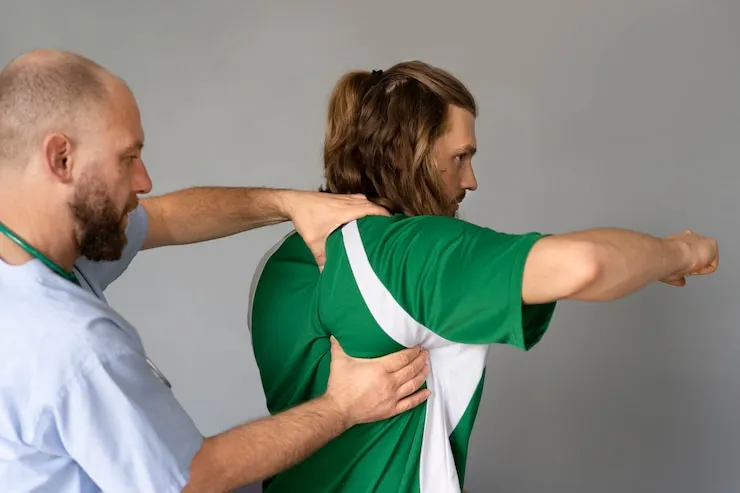Aaron Jackson
Restoring Neck Mobility: Exploring Cervical Disc Replacement Surgery with a Neurosurgeon
The seven vertebrae of the cervical spine provide support and flexibility for the head, allowing for a wide range of motion essential for daily activities. However, the discs cushioning these vertebrae can deteriorate over time, causing a condition known as cervical disc disease. This degeneration can lead to pain, stiffness, and limitations in neck movement, significantly impacting your quality of life. For individuals facing chronic neck pain that doesn't respond to conservative measures, cervical disc replacement surgery performed by a qualified neurosurgeon can offer a promising alternative to traditional spinal fusion.
How Does Cervical Disc Replacement Work?
Cervical disc replacement surgery involves removing a damaged disc in the cervical spine and replacing it with an artificial disc. This artificial disc is designed to mimic the function of a healthy disc, allowing for continued movement between the vertebrae while providing support and stability. The surgery typically involves a minimally invasive approach, minimizing tissue disruption and promoting faster recovery times.
Conditions Treated with Cervical Disc Replacement Surgery
Cervical Disc Herniation:
A herniated disc occurs when the soft inner core of the disc bulges out, putting pressure on nearby nerves. This can cause pain, numbness, tingling, and weakness in the neck, arm, or hand. Cervical disc replacement surgery can alleviate these symptoms by removing the herniated portion of the disc and replacing it with an artificial disc.
Cervical Spondylosis:
Cervical spondylosis is a general term for age-related wear and tear of the cervical spine. This can involve disc degeneration, bone spur formation, and ligament thickening. Cervical disc replacement surgery can address disc degeneration by replacing the damaged disc with an artificial one, potentially improving neck mobility and reducing pain.
Cervical Radiculopathy:
Cervical radiculopathy occurs when a compressed nerve in the cervical spine causes pain, numbness, tingling, and weakness that radiates down the arm. Cervical disc replacement surgery can help alleviate these symptoms by decompressing the nerve root and allowing for more space within the spinal canal.

Why Choose a Neurosurgeon for Cervical Disc Replacement Surgery?
Advanced Surgical Expertise:
Neurosurgeons undergo rigorous training and possess specialized skills in performing intricate procedures on the brain and spine. Their in-depth knowledge of the nervous system, coupled with exceptional surgical skills, ensures precise and efficient cervical disc replacement surgery.
Minimally Invasive Techniques:
Neurosurgeons are at the forefront of advancements in spine surgery, increasingly utilizing minimally invasive techniques for cervical disc replacement. These procedures involve smaller incisions, resulting in less tissue disruption, faster recovery times, and reduced postoperative pain.

Preserving Motion:
Unlike traditional spinal fusion surgery, which fuses vertebrae together, cervical disc replacement aims to preserve natural motion in the neck. This can lead to improved range of motion and a faster return to daily activities.
Is Cervical Disc Replacement Surgery Right for You?
Cervical disc replacement surgery is not a one-size-fits-all solution for neck pain. It's crucial to consult with a healthcare professional, including a neurosurgeon, to determine the underlying cause of your neck pain and discuss whether cervical disc replacement is the most suitable treatment option. Factors such as the severity of your condition, your overall health, and non-surgical treatment options will be considered during this evaluation.
Living an Active Life After Cervical Disc Replacement Surgery
Cervical disc replacement surgery can be a life-changing procedure for individuals facing chronic neck pain. Following surgery and proper rehabilitation, most patients experience significant pain relief and improved neck mobility. This improved mobility can allow you to return to an active lifestyle and participate in activities you may have previously limited due to neck pain.

 Telehealth Visits Available
Telehealth Visits Available
